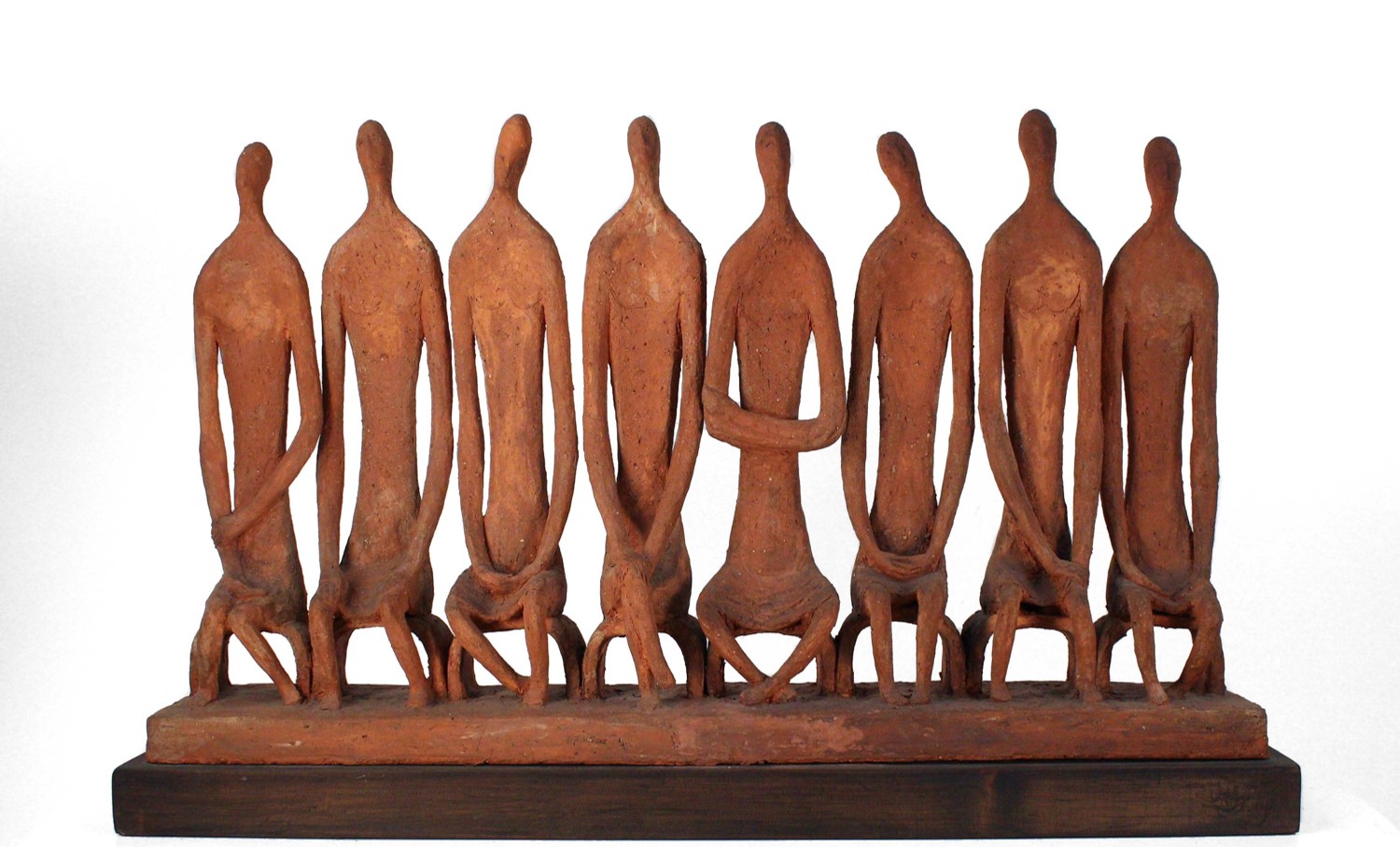Dorothy Riester (1916-2017) was born in Emsworth, Pennsylvania and attended the College of William and Mary as well as Carnegie Mellon University as an undergraduate, and completed some graduate work in ceramics at the University of Pittsburgh before obtaining her Masters of Fine Arts degree from Syracuse University in Sculpture and Design. Riester married her husband Robert in 1938, after they both graduated from college, and the couple moved to Syracuse not long after. Riester was a lifelong sculptor and designer, inspired by the relationship between art and nature, who worked in many different mediums, although she favored metal, clay, and wood. She is primarily known for her monumental works, and several of her larger outdoor commissions are installed throughout New York State. Riester also often sculpted small whimsical figures in clay, which she exhibited in museums and galleries. Riester participated in the twenty-third Ceramic National exhibition at the Everson in 1964, to which she contributed Audience, a sculpture portraying eight elongated, unglazed earthenware figures seated in a row. Whether large or small, Riester’s work typically illustrates her deep love of and respect for the environment. In the late 1950s, Riester and her husband purchased twenty-three acres of undeveloped land in Cazenovia, New York. They built a summer home at the top of the hill on the property, which provided a small studio and living space, and over the next decade, continued to purchase acres of land surrounding their property as it became available. In 1965, with plans to relocate permanently from Syracuse to Cazenovia, the Riesters expanded their home and added trails, gardens, and other buildings throughout the property, which was always open for artists and casual visitors to explore. In 1991, Riester and her husband officially named the land Stone Quarry Hill Art Park, founding one of the first outdoor art parks in the United States. Despite her declining health and move into a senior living community, Riester continued to sculpt up until the end of her life. Limited space restricted which materials she could use, but driven by the need to create, she simply used whatever materials she could find. Riester passed away in 2017 at the age of one hundred. Audience is currently on view in Key Figures: Representational Ceramics 1932-1972 through June 23, 2019.
-Steffi Chappell, Assistant Curator


